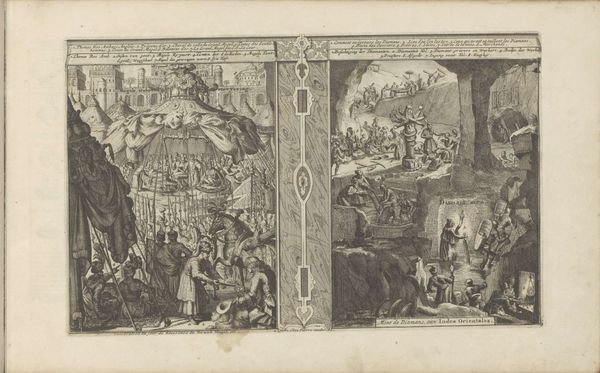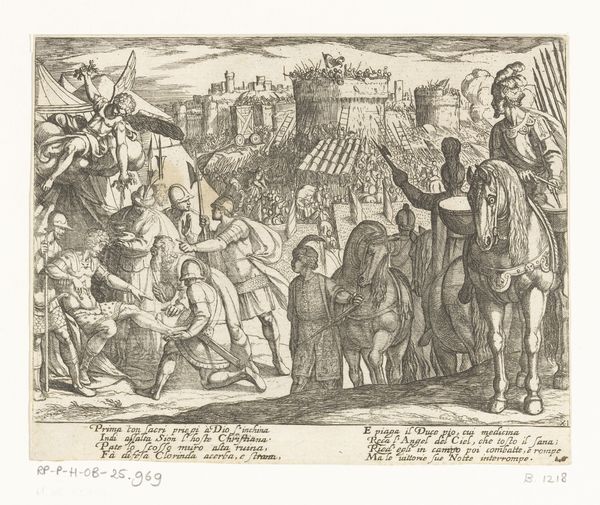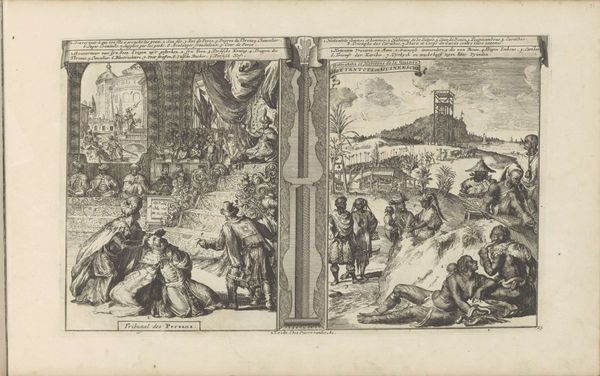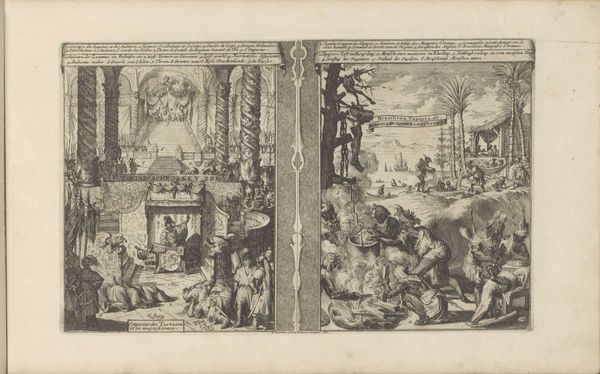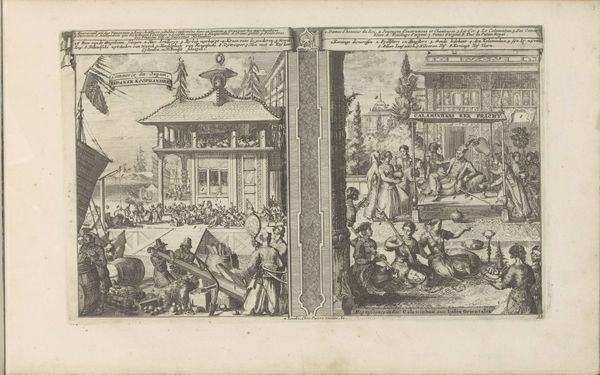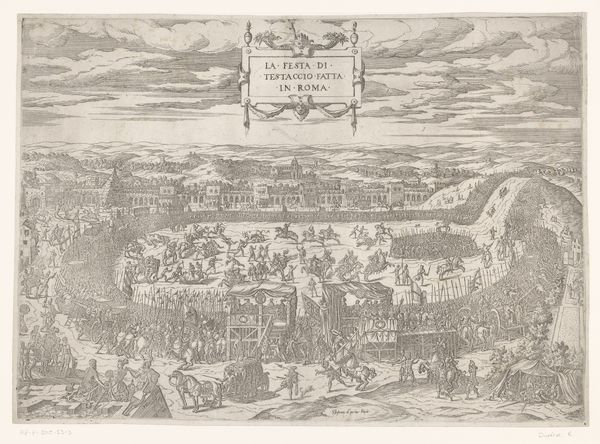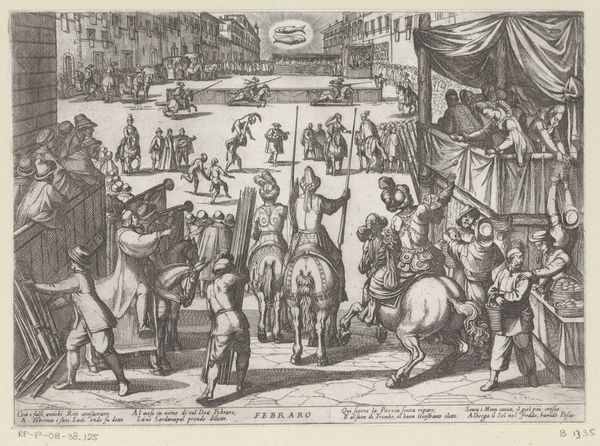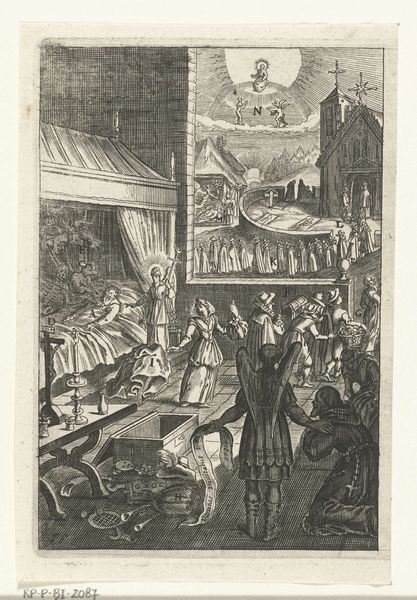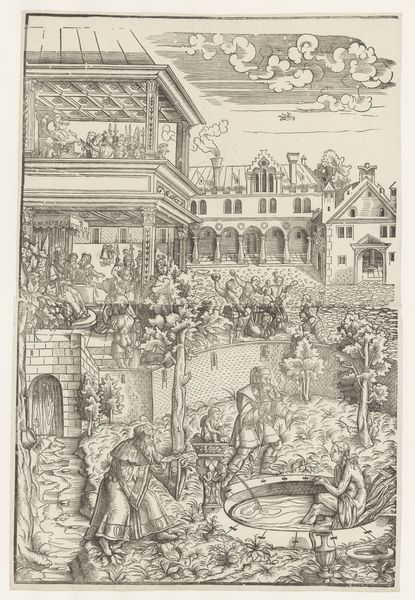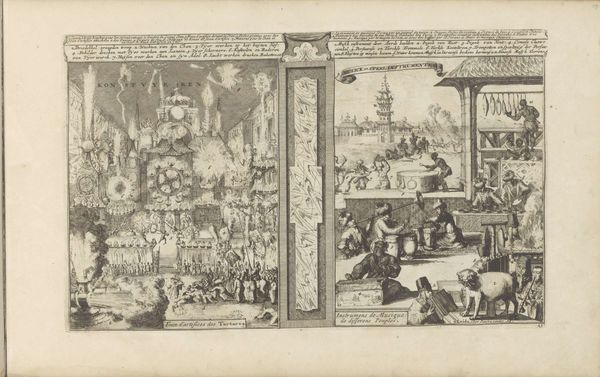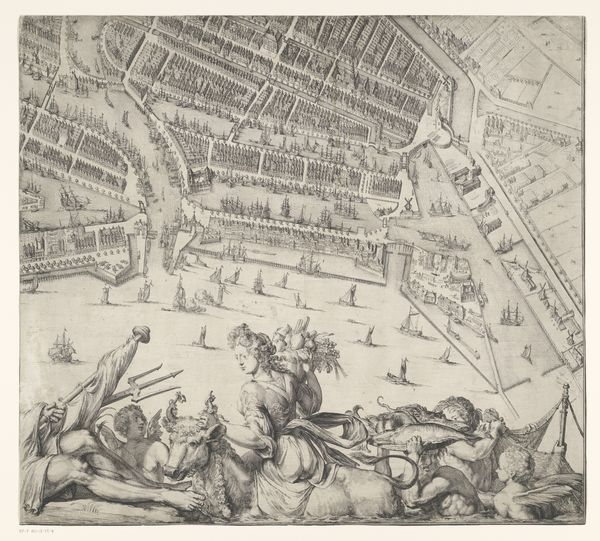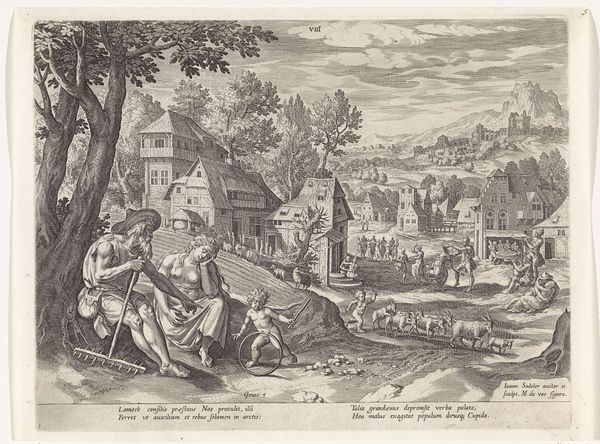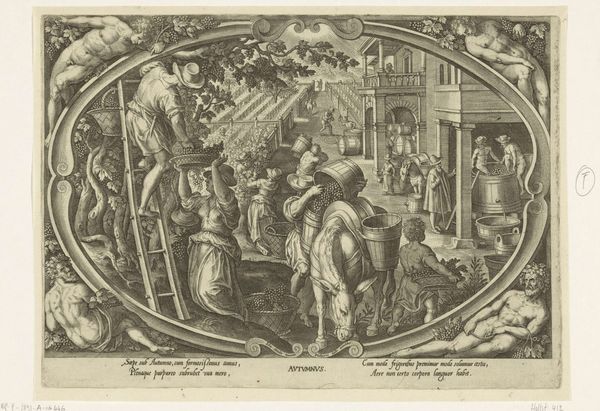
Spotprent op de nederlaag van Frederik van Bohemen in de slag op de Witte Berg bij Praag, 1620 1621
0:00
0:00
print, engraving
#
allegory
#
baroque
# print
#
history-painting
#
engraving
Dimensions: height 175 mm, width 261 mm
Copyright: Rijks Museum: Open Domain
This print, made in 1620 by an anonymous artist, captures the defeat of Frederick of Bohemia at the Battle of White Mountain, near Prague. The printmaking process, in this case likely etching or engraving, is crucial to understanding its purpose. This is a reproductive medium, designed for wide distribution. The fine lines, created by acid or a sharp tool biting into a metal plate, allow for detailed imagery and text. But more importantly, they enable the rapid production of multiple copies. Consider how the material and process speak to the print’s function as political propaganda. The sharp lines and contrasting tones create a clear, legible image, easily understood even in reproduction. The relative affordability of prints made them accessible to a broad audience. So, next time you see a print, remember that its meaning is not just in the image, but also in the means of its making and circulation. It’s a powerful reminder of how art can be used to shape public opinion, and how the very materials and processes used can contribute to that end.
Comments
No comments
Be the first to comment and join the conversation on the ultimate creative platform.

